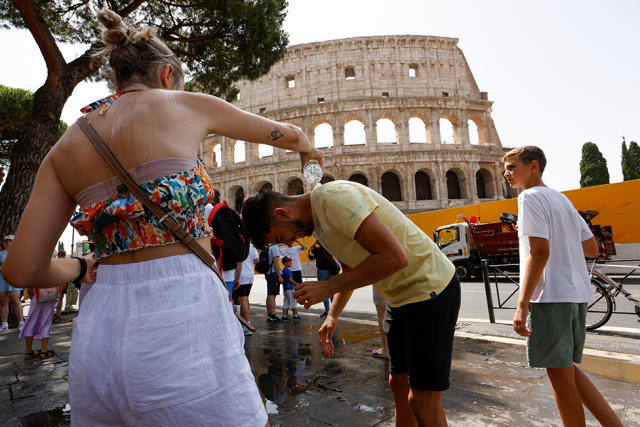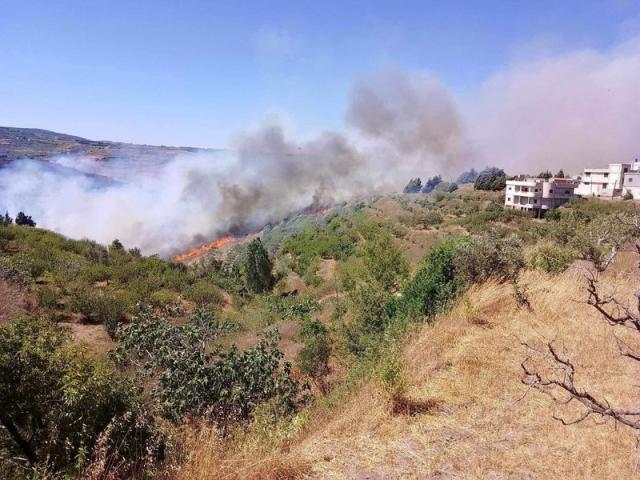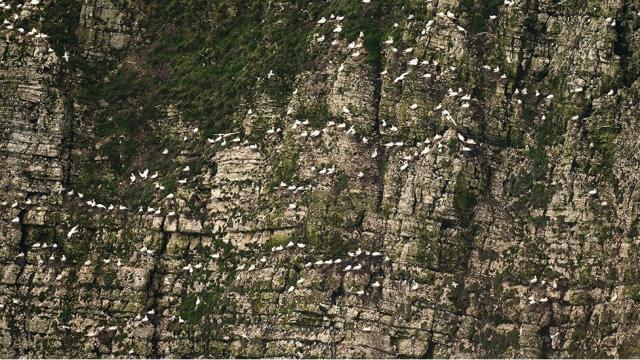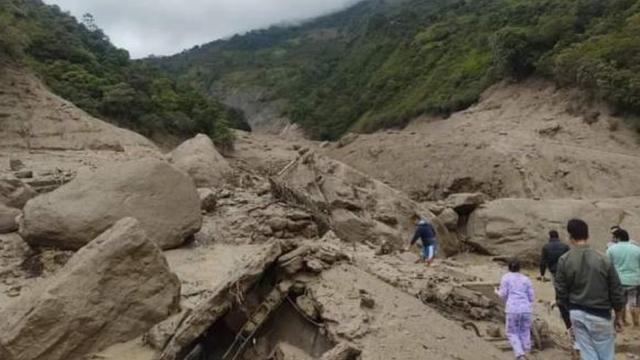Science Daily News | 19 Jul 2023

Views (98)

‘Zombifying’ worms are evolutionary oddballs, missing genes all other animals have
Genetic analysis has revealed that horsehair worms, of the phylum Nematomorpha, took an evolutionary detour that cost them about 30% of genes found in other animals.

Threadlike worms living in the guts of certain insects make their hosts jump into water and drown.
What scientists knew about these parasites resembling strands of spaghetti was already pretty bizarre.
But the worms just got a lot weirder.
Genetic analysis has revealed that horsehair worms — scientifically classified as the phylum Nematomorpha — took an evolutionary detour many millions of years ago that cost them about 30% of genes that are found in all other animals.
Scientists discovered the loss when they sequenced the genomes of two nematomorph species: the freshwater hairworm Acutogordius australiensis and the marine species Nectonema munidae.
However, when the scientists compared their horsehair worm genomes with genomic information from other animals, something was missing, Cunha told CNN.
“There’s a given set of genes that are expected to be found across animal groups,” she said. “It’s used as a metric for the quality of your genome.” The same group of genes — about 200 in all — was absent from both horsehair worm species, suggesting that this was a genomic quirk in the group rather than a data error.
Further analysis revealed that the genes controlled cilia development, the study authors reported.
As useful as cilia are, horsehair worms seem to be doing just fine without them, the scientists reported. Prior studies of nematomorphs have noted that they lack cilia, but this had not been explored at the genetic level. The new study presents a fresh perspective on the anomaly, “combining genome-scale molecular data and detailed morphological observation,” said biologist Keiichi Kakui, a lecturer in the department of biological sciences at Hokkaido University in Japan.
“It is hard for me to imagine how this species finds and enters their host in (the) vast deep-sea,” Kakui said.
To date, scientists have identified several hundred species of freshwater horsehair worms and five species of marine horsehair worms. Marine horsehair worms spend their entire lives in water, but freshwater species are only aquatic as adults. Behavior manipulation of host animals is known only in freshwater species.
Because marine and freshwater horsehair worm lineages diverged millions of years ago, the genetic loss likely happened in an ancestor and both lineages inherited genomes lacking the genes for cilia, Cunha explained. “By sequencing more species of hairworms, we would find even more evidence for that.”
The video above, taken by entomologist Bruno de Medeiros, assistant curator of insects at the Field Museum of Natural History, shows freshwater horsehair worms in California’s Muir Woods National Monument.
Scientists are still piecing together the molecular mechanisms that trigger these behavioral changes. More genomic data will make it possible for researchers to compare genes and identify their roles in behavior control across multiple parasitic species, Cunha said.
“Do they share some similarities in those mechanisms — in those genes that they have or don’t have?” she said. “These are some of the questions that we will be able to target better, now that we are building more genomic resources for different animals that were not represented before.”
Syria struggles to contain wildfires as temperatures rise
Firefighters were battling on Tuesday to extinguish multiple wildfires raging across the central Syrian countryside, local civil defence officials said, as temperatures reached 40 degrees Celsius in parts of the country. One fire broke out on public farmland in the central province of Hama, where firefighting teams were working to stop it spreading to surrounding areas, the head of the local forest protection centre, Amjad Hammad, told state news agency SANA. Another was raging across agricultural zones in the adjacent province of Homs, the head of civil defence there told SANA, saying civil defence teams were struggling to contain it due to "the mountainous and rugged terrain".

DAMASCUS (Reuters) - Firefighters were battling on Tuesday to extinguish multiple wildfires raging across the central Syrian countryside, local civil defence officials said, as temperatures reached 40 degrees Celsius in parts of the country.
One fire broke out on public farmland in the central province of Hama, where firefighting teams were working to stop it spreading to surrounding areas, the head of the local forest protection centre, Amjad Hammad, told state news agency SANA.
Another was raging across agricultural zones in the adjacent province of Homs, the head of civil defence there told SANA, saying civil defence teams were struggling to contain it due to "the mountainous and rugged terrain".
Local outlet Sham FM reported that families from the village of al-Marana had fled their homes as the wildfire approached.
The state news agency said temperatures were up to six degrees Celsius higher than average across the country on Tuesday, with active gusts and "very hot clouds".
They hit 40C (104F) at the ancient city of Palmyra, in the province of Homs, and touched 39C in the capital Damascus, where chronic power cuts have made it hard for families to stay cool.
One group of women in the capital charged tiny electric fans with portable batteries and regularly dunked their feet in cool water to make up for the lack of air conditioning.
"We move the couches here, pour water on the ground and direct the fans towards the ground, then we feel like we are in the Maldives," said one of them, Mounira Wassouf.
Erratic rainfall and rising heat are among the suspected impacts of climate change already affecting Syria. They have shrunk Syria's wheat crop in recent years down some 75% from around 4 million tonnes annually pre-war.
(Reporting by Kinda Makieh and Yamam al-Shaar; Writing by Maya Gebeily; Editing by Alex Richardson)
Quick grants from tech billionaires aim to speed up science research. But not all scientists approve
In March 2020, an experiment in science philanthropy was hatched in the span of a five-minute call. Patrick Collison, the now 34-year-old billionaire CEO of the online payments company Stripe, and economist Tyler Cowen were chewing over a shared concern: Scientific progress seemed to be slowing down. As the first pandemic lockdowns went into effect, researchers were in a holding pattern, waiting to hear if they could redirect their federal grants to COVID-related work.

In March 2020, an experiment in science philanthropy was hatched in the span of a five-minute call.
“We thought: Let’s just do this,” Cowen recalls. “It was a bit like put up or shut up.”
Grants of $10,000 to $500,000 backed early efforts to sequence new coronavirus variants, clinical trials for drugs that could potentially be repurposed, and a simple and reliable saliva-based COVID-19 test. By January 2022, all the money had gone out the door to more than 260 projects.
Collison, along with Vitalik Buterin, creator of the Ethereum blockchain platform, and other donors, pledged more than half a billion dollars to the Arc Institute, a new biomedical research nonprofit that wants scientists to focus on science, not chasing grants.
Eric and Wendy Schmidt spun off Convergent Research, a nonprofit helping to incubate independent organizations to develop research tools and niche or underfunded areas of science.
While these contributions are just a drop in the bucket compared with the nearly $50 billion the NIH spends on research each year, they’ve been met with both applause and ambivalence from scientists and philanthropy observers. Many of the experiments are similar to approaches already backed by government, leading some to question whether small-scale funding experiments in science are money well spent. Others question the societal implications when more science research is driven by a handful of tech elites motivated by the “move fast and break things” ethos.
Private donors have long played a role in shaping science in the United States — from the creation of the modern research universities to the independent research institutions of the early 20th century and beyond.
“There is a sort of ‘back to the future’ element to what these guys are doing,” says Eric John Abrahamson, a historian at work on a book about science philanthropy. He sees parallels between today’s donors and Andrew Carnegie and John D. Rockefeller, who wanted to reimagine the institutions of science in the 1910s, ’20s and ’30s.
The impact of private donors has grown since the 1990s, says France Córdova, president of the Science Philanthropy Alliance, which works to increase giving to science research. Nonprofit and philanthropic contributions for basic research increased from $1.5 billion in 1990 to $9.8 billion in 2020, according to NSF surveys. Contributions from higher education funds, which include money donors gave to university endowments in the past, increased from $1.9 billion to more than $14 billion in that same period. That growth is largely thanks to new philanthropies built on wealth from technology, data, and finance, she says.
These donors “want to apply some of the same entrepreneurial spirit that they used to get their money to philanthropy,” Córdova says.
Brian Nosek, executive director of the Center for Open Science, which works to increase transparency in the research process, applauds donors for helping to shake up how science is funded.
“There are many possible ways to decide what to fund, who to fund, how to fund them, how to track progress,” Nosek says. “We haven’t had a culture of experimentation.”
Nosek is on the board of the Good Science Project, an advocacy group that’s pushing government agencies to make their science grant making more innovative and efficient. Stuart Buck founded that nonprofit last year after a conversation with Collison. Collison and his brother, John, are its biggest benefactors, though they have not disclosed the size of their contributions.
Funding approaches that shield scientists from bureaucracy or allow a wider range of ideas to get support may be useful in a circumscribed way, says David Peterson, an assistant professor of sociology at Purdue University who studies how scientific organizations are evolving. But he has doubts that these efforts will tilt the scale more broadly.
In Peterson’s conversations with scientists, some said they view these donors’ approaches as an extension of the tech world’s fixation with disruption, he says. “There is a feeling that science is another institution like the music industry or taxicabs that are ripe for fundamental transformation to make it much more efficient.”
But for a select group of scientists doing the kind of work these extremely wealthy donors care about, there’s now more money and opportunity.
At E11 Bio, for example, an interdisciplinary team of nine scientists is developing a technology platform for scientists to map every circuit between the 100 billion or so neurons in the brain. Understanding the full architecture of the brain could eventually lead to new treatments for brain disorders.
It may take years to know whether these efforts succeed.
New approaches can have a big impact if they’re transparent about what’s working — and what isn’t, says Nosek.
“The main limitation that we’ve had in a lot of these efforts to improve science is that it’s done with good ideas and good intentions,” he says, “but without good evidence” to determine whether they’ve worked.
_____
Bird flu investigation after Bempton Cliffs seabird deaths
The RSPB says a number of kittiwakes and other birds have been found dead on the cliffs and sea.

An investigation has begun after a number of birds were found dead at a nature reserve in East Yorkshire.
The RSPB said in a social media post that the fatalities at its site at Bempton Cliffs were being investigated for any possible link to avian flu.
The charity said that kittiwakes seemed to be particularly affected with many found dead "on the cliffs and sea".
The Department for Environment Food and Rural Affairs (Defra) said it was waiting for test results.
The RSPB said the site would remain open to the public, but warned people not to touch any dead birds they found.
The site north of Bridlington is home to about 500,000 sea birds during the breeding season.
The RSPB said many of the birds were leaving their nests as the newly-hatched young flew off.
"While it is worrying, the birds affected are in a localised area," the charity said in a Twitter post.
"It is hoped that the majority of the birds will leave the cliffs before the impact worsens."
The UK population of kittiwakes has declined by about 50% in the past 25 years, resulting in the bird being identified as a conservation priority and a red-listed species, the RSPB said.
It added that the Bempton Cliffs colony was "internationally important and represents more than 3% of the UK and more than 10% of the UK and Ireland breeding population".
The birds build their nests on the sheer cliff faces and produce up to three eggs each year.
In April, restrictions were lifted allowing poultry and captive birds to be kept outside again.
A Defra spokesperson said as since it was unable to comment specifically about Bempton Cliffs until test results were received.
However, they added the department recognised the wider outbreak poses "a significant threat to the UK's wild bird populations" and that it shared concerns "about the impact on breeding populations, particularly seabirds that nest closely in large numbers".
The spokesperson added: "We continue to keep the outbreak in wild birds under review and work closely with partners on any action needed.
"Alongside our year-round wild bird surveillance programme, we have invested £1.5m in research to understand how this disease is behaving in wild and kept birds to inform our approach going forward."
Colombian mudslide: Children swept away as river burst its banks
At least 14 people are dead after rising river waters swept away homes in Cundinamarca province.

At least 14 people, among them several children, have been killed after a river burst its banks in Colombia, officials say.
Rising water levels caused mudslides which swept away homes in Quetame, a municipality south-east of the capital, Bogotá.
Rescue workers are searching for at least a dozen people who have been reported missing.
A bridge linking Bogotá with the city of Villavicencio has been destroyed.
Among those killed are three children aged 12, 10 and six, rescue workers said.
The 12-year-old was swept away by a mudslide along with his mother, newspaper El Tiempo reports.
The sudden surge in the level of the local river came after heavy rainfall.
Locals reported hearing a roaring sound as the landslide engulfed the main road linking the capital with the south-eastern provinces of Cundinamarca and Meta.
The worst affected area is Naranjal, where at least 20 homes were destroyed by the rising waters.
Video uploaded to social media appears to show a house collapsing as the ground it stands on is being swept away by a fast-flowing river.
Heavy machinery has been brought in to clear the road.
Heatwave scorches Europe, in pictures
Temperatures are expected to peak at 46C in Sardinia as a heatwave continues in parts of Europe.

A heatwave is continuing across parts of Europe, with temperatures on the Italian island of Sardinia expected to reach a high of 46C (114.8F) on Tuesday.
There have been wildfires on the Spanish island of La Palma and mainland Greece.
The World Meteorological Organization says extreme weather patterns highlight the need for greater climate action.
In Rome, tourists and residents cooled off in front of the famous Roman Colosseum (above) and at public fountains (below).
Bologna, also in Italy, saw similar scenes - including one man cycling through the city with an electric floor fan.
A beachgoer took shelter whilst on the edge of Ada lake in Belgrade, Serbia.
Authorities battled wildfires in the area of Magoula, west of Athens, Greece.
Forest fires also burned in La Palma, Spain.
All photos subject to copyright.
0 Likes
